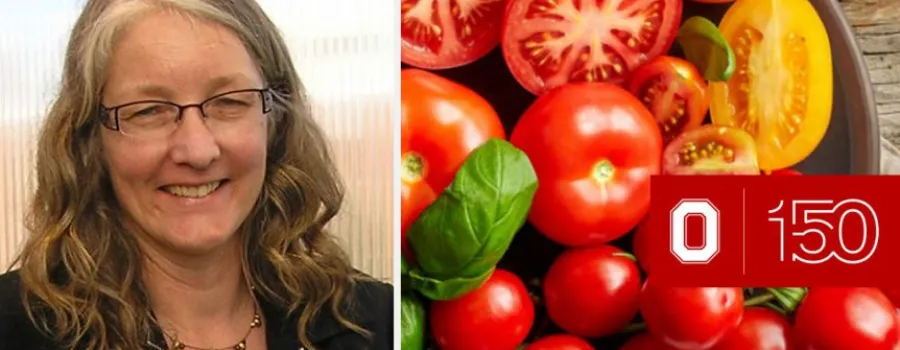
It has taken 10,000 years of domestication trial and error to create the huge variety of tomatoes found in today’s farmers markets. Until the pioneering work by Esther van der Knaap, associate professor of horticulture and crop science at Ohio State (2001-2015), the genetic basis for the vast range of tomato morphology was largely mysterious.
In 2008 van der Knaap’s research team identified SUN, a gene which, when turned on, causes fruits to become elongated. When turned off, it causes round varieties. In 2013 her team identified SIKLUH, which impacts fruit size by promoting extra cell divisions and delaying ripening during the process of fruit development. These extra cell divisions lead to enlarged fruit, while the delay in ripening is likely the result of the extended cell division stage. Tomatoes are serving as a model in the emerging field of fruit morphology studies and ongoing work has shown that similar genetic pathways may be found in other plants such as potatoes, peppers, cucumbers and gourds. While this work is extremely significant for plant breeders, it is also critical for a fundamental understanding of plant evolution and development.
In 2014, van der Knaap was named a fellow of the American Association for the Advancement of Science.